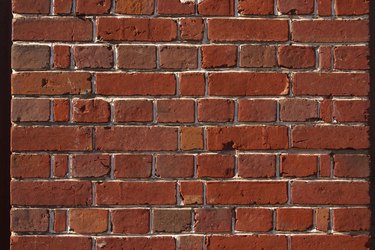
Masonry wall systems have been used since ancient times to build durable and long-lasting structures. The compressive strength of masonry structures depend on the type of masonry units being used and the mortar joints anchoring each unit. Mortar head and bed joints help align the bricks and blocks comprising walls in homes and commercial buildings.
Function
Video of the Day
Mortar—a mixture of cement, sand and lime—is the wet substance that bonds masonry units together. As masonry units are laid in the mortar, the areas between each unit form mortar joints. Head joints form the vertical spaces between each brick or concrete block unit. Bed joints form the horizontal spaces. Since mortar head and bed joints bond masonry units together, they are integral to the overall structural integrity of walls and buildings.
Video of the Day
Types
Not all head and bed joints are formed in the same fashion or have identical appearances. With the help of tools, builders can shape head and bed joints so that water flows towards the wall's exterior. Likewise, mortar applied using exterior shapes, such as weathered and concave joints, are ideal for preventing moisture penetration into the joints.
Head and bed joints can also form interior shapes. These include raked, extruded and struck joints. Interior-shaped mortar joints form ledges where water can collect and penetrate the mortar joint system. Additionally, mortar used to form head and bed joints can also vary in composition. Some mortar may not contain cement, while other mortar types employ different amounts of aggregates, such as sand.
Considerations
Nationally recognized standards published by professional groups, such as the Brick Industry Association, provide guidance for properly filling mortar joints and preventing structural weakness in masonry. Solidly filled mortar head and bed joints reinforce and improve performance in masonry structures. Moreover, using the appropriate mortar and forming the appropriate thickness of mortar joints reduces chances of shrinkage after drying.
Warnings
Laying partially filled or inconsistent mortar joints results in reduced masonry strength and sound insulation in structures. Gaps and holes form in mortar head and bed joints, allowing air and moisture to penetrate through the wall. Consequently, these weakened structures often result in leaky walls and significant moisture damage. Moreover, inconsistent mortar application leads to further erosion and cracking in head and bed joints. Gradual disintegration of mortar head and bed joints can contribute to corrosion of other structural elements, such as steel.